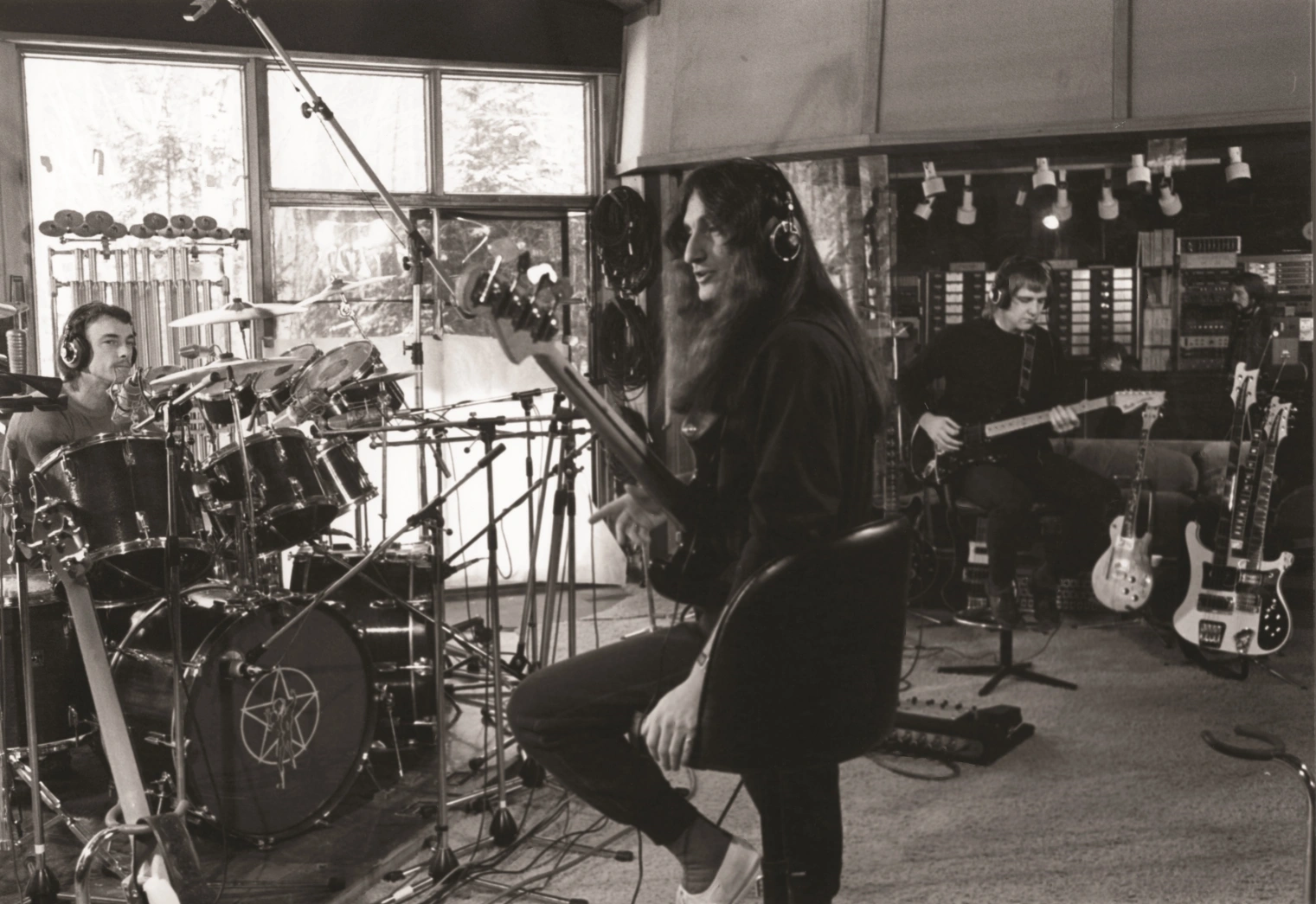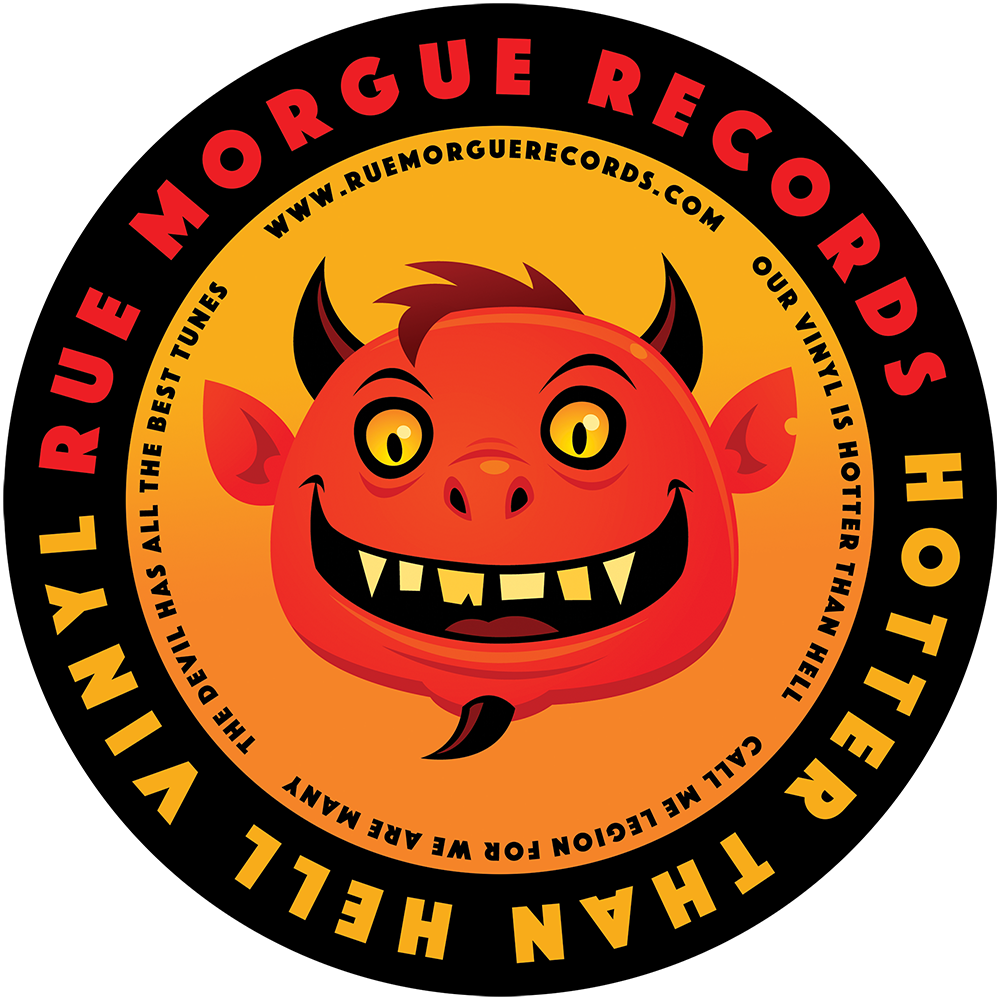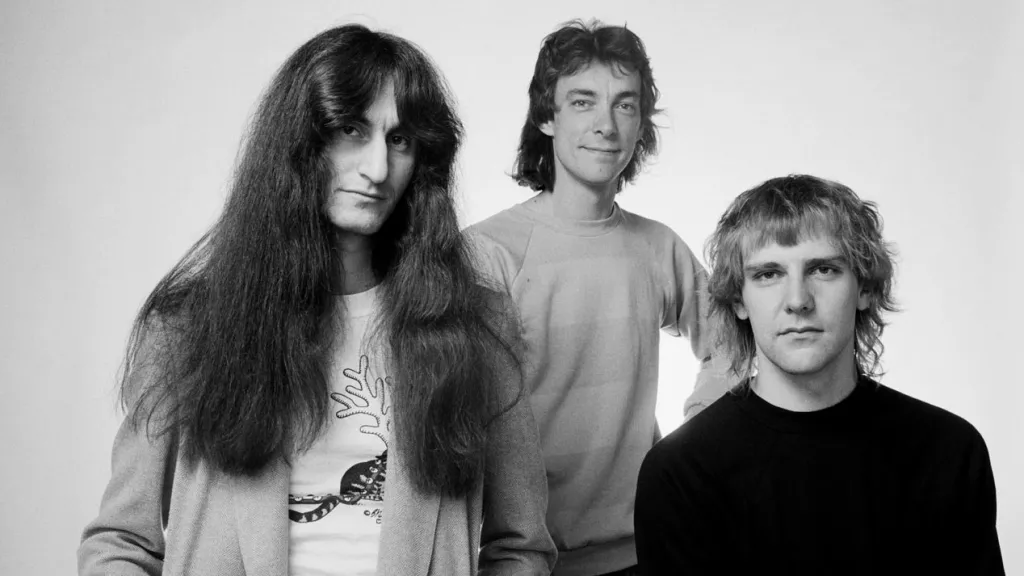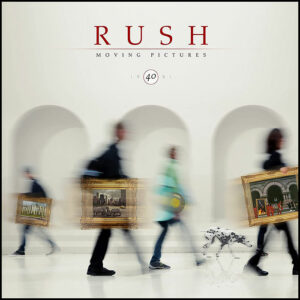By Rod Whitfield
Moving Pictures. The album. When approached to do a review of this mighty record for its 40th anniversary, I was tantalised and excited by the prospect, and just a little daunted, at the same time. After all, what does one say about this record that hasn’t been said before in the last four decades? Its very name possesses an aura of its own, and the album holds such a place of reverence in the hearts and minds of the progressive rock, and broader rock ‘n’ roll community across the globe, it’s difficult to do it justice. But, as a rock journalist since 1995 and obsessed Rush fanatic since 1983, I’ll try my best.
If you want evidence of my overwhelming Rush fanaticism, just know that I have travelled from Melbourne, Australia to North America three times just to see them, as they never toured my home nation in their almost five decades of existence.
Some initial remarks about the album and the era before we delve into the nitty-gritties of each of the seven stupendous tracks this album has to offer. Any Rush fan worth his or her salt knows there is a highly conspicuous delineation in sound between the band’s 70s and 80s works. In fact, it was like they drew a conscious line in the sand as the 1970s drew to a close and the 80s drew near, knowing that they could not carry on down the same path as they had been forging in the 70s as the new era approached, and the first step in the transition came in January of 1980 in the form of Permanent Waves. The contrast between PW and their previous studio release Hemispheres could hardly have been more pronounced. I’d imagine PW’s comparatively stripped-back sound may have shocked a few of the band’s hardcore fans at the time, but the songs and the album overall were just so damn good it became an instant classic anyway.
Part two of the transition came only a little over twelve months later during this bountiful period in the band’s history. Moving Pictures landed in February of 1981, and not only did it complete the evolution in sound, it became the band’s best-known most universally loved and lauded album, its definitive statement, the moment when the excesses of 70s prog met the more finely-honed sounds of the punk and new wave-influenced early 1980s.
The one-two punch of PW and MP was virtually the perfect two-part bridge from one era to the next, and prepared fans’ ears for what was to come next. The change was so profound, it took two albums to fully realise it.

Rush’s perpetually exploratory songcraft combined sterling musicianship, complex compositions and distinctive lyrical flair that drew fans in worldwide. (Photo by Yael Brandeis)
Many Rush fans whine relentlessly about what they perceive to be the ‘too keyboard heavy!’ 80s era, but the band were never, ever going to stand still, never going to cling to their 70s prog roots in the 80s. I personally adore both eras. It’s really the only way to be.
Anyway, I could ramble on and on about this band’s history and output into the middle of next week, but it might be time to examine the content of this monumental work of high art.
Tom Sawyer
Speaking of statements, the band could hardly have made a stronger, more attention-snaffling one than with what became their most recognisable tune. Tom Sawyer veritably explodes into the listener’s ears and consciousness with a cymbal crash, relentless drum groove, swirly synthy wash and on-point Geddy Lee vocal. Then when the titanically crunchy guitars kick in, it’s like all hell and chaos breaks out, although contrarily, in a tight, concise and cohesive manner. The statement is made, the 70s are gone, banished, consigned to history, to be viewed with profound affection but never to return. There is no point clinging onto that era because we’re still here, just as powerful as ever, if not even more so, but the sound is more direct, more defined, more focused.
From the powerhouse intro, the song takes you on a dynamic and enigmatic ride, replete with profound lyricism, astonishing instrumental and compositional chops and Lee’s wild vocal histrionics, until you get to the famous instrumental breakdown. It simply must be heard to be believed, and continues to astound even after so long and so many listens. In the space of less than two minutes, each player gets to shine. And shine like the sun they do. First, it’s Geddy and his snaky, odd-timed keyboard line, then Alex Lifeson’s blistering and melodic lead work, and finally Neil Peart’s thunderous, heavily detailed drum break, all underpinned by Lee’s ultra-active but tasteful basslines. It really is something to behold, a ridiculously skilled band on absolute fire. It apparently remained challenging to play to their very last show, over three decades later.
That this is this band’s best-known song in its almost half-century and 20-odd studio albums of history is somewhat puzzling. It’s heavy, it’s complex, it’s longer than the usual format that commercial radio allows, and it really has no catchy chorus. Rush have released far more accessible-sounding tracks than this. Its trick is that it’s just so damn good, so powerful and so unique that it simply cannot be ignored.
Red Barchetta
What a contrast, and yet it makes so much sense. The gentle, harmonically-driven intro of Red Barchetta lulls the listener into believing the album’s second track is quiet ballad, but nothing could be further from the truth. Although not as edgy as the record’s opener, RB rocks just as hard after it all kicks in at the 1:10 mark, and the lyrical theme of the car being a symbol of freedom and movement only adds to the exhilarating nature of the piece (Peart was an avid collector of automobiles). Again, Lifeson’s lead work really shines, and the ‘suddenly ahead of me…’ post-lead break bridge part never fails to send a shiver through me.
Like all four tracks on side one of Moving Pictures, Red Barchetta remained a staple in the band’s live set to their very last show in 2015.
YYZ
Peart tapping out the letters Y-Y-Z in morse code on crotales sets up this monumental piece of instrumental mastery, YYZ being the transmitter code for Toronto’s Pearson Airport. While the track features no lyrics whatsoever, it is still a highly conceptual piece, detailing the feelings people go through as they wait for a flight at an airport, the feeling of being in limbo, of no longer truly being in the city they were in, but also not being anywhere else either.
The music is dark, driving and features untouchable musicianship. Interestingly, the track is structured in a very traditional way, featuring an intro, verse, chorus, verse chorus, middle eight/bridge section (which features a fabulous, modal lead break from Lifeson), verse and chorus before it finishes in a succinct (for Rush) four and a half minutes.
All that said, while dark and cerebral, YYZ is also super-catchy and a shitload of fun to listen to. The band members always looked like they were having the best time playing it. There is no mystery as to why YYZ is considered by many to be one of the greatest rock instrumental tracks of all time.
Limelight
The album heads back into more melodic, although no less powerful territory with the last track on side one, Limelight. The opening riff is an all-time classic, and it sets up one of the band’s catchiest ever tunes, as well as one of their most popular. It’s another track that takes the listener on a ride, within the concise confines of a sub-four and a half minute song, with time signature and tempo changes everywhere, a singalong chorus, untouchable musicianship and a lead break from Lifeson that builds beautifully to soaring, exhilarating heights.
It even has a big rock ending!
Lyrically, it’s one of Peart’s most interesting and introspective pieces. More known for writing about fantastical and universal topics, Limelight gives a real insight into the psyche of the man himself. Long known for being a little ‘arrogant’ towards his adoring fans, this is Peart’s way of letting people know that he’s not arrogant, he’s actually just shy of all the attention, and living in an almost constant spotlight due to the band’s burgeoning success was very difficult for him, and something he struggled with constantly.
Overall, Limelight is both personal and anthemic and a fantastic way to end side one.
While side one features four of the band’s absolutely most beloved tracks, side two flips the script on its head and delves deeply into more idiosyncratic territory. Its three tracks are a little less immediate and accessible than the four tunes on side one, but once you allow them under your skin, they are every bit as enjoyable and memorable.
The Camera Eye
This song is a real enigma, there is much to unpack here. At just under 11 minutes long, it was truly the last of their ten minute-plus epics, not one single track on any album for the rest of their career topped the ten-minute mark. In typical style (to that point in their career anyway), they pack more ideas into the three-and-a-half-minute intro than most bands put into entire songs. Opening with sampled street sounds, eerie synth lines, marching rhythms and more thundering around the kit from Peart, and driving, fist-pumping four on the floor rock lead into an odd-time verse that seems to find Geddy critiquing the ‘grim-faced and forbidding’ city of New York, before he goes on to examine and contrast London the second verse.
It’s a fascinating piece of music, the feel both complex and expansive at the same time, the lyrics and the concept very much open to interpretation. It goes through so many different feels, colours, time changes and tone-shifts, it makes your head spin, although at the same time it grounds itself, returning regularly to that same, familiar, rock-solid 4/4 riff and groove set up in the intro.
Once again, Lifeson’s solo is a song in itself, starting almost wistfully but building into a blistering shredfest that, again, climaxes the entire song.
The Camera Eye is simultaneously one of Rush’s most debated and most underappreciated songs. It’s difficult to get your head around. It’s an acquired taste. But once you acquire that taste, you recognise it as one of the most fascinating pieces of music this band ever put to tape.
Witch Hunt
Here, the album takes a true step into darkness. Witch Hunt is one of the most epic sub-five-minute songs you will ever hear in your life, has much to say about historical and modern society and is just relevant today as it was in 1982. Possibly even more so.
The dark, atmospheric, slowly building intro features an apparent vigilante mob being whipped into a frenzy by a mob leader under flickering torchlight, leading into yet another classic hard rock riff from Lifeson.
This isn’t just my favourite Peart lyric, but, alongside Black Sabbath’s War Pigs, it is my favourite rock lyric of all time. It’s a damning statement on the mob mentality and how humans often become mindless hate machines when manipulated into it, often through xenophobia, bigotry and religious zealotry, by self-serving ‘leaders’, politicians and media pundits. We see it all the time.
Quick to judge
Quick to anger
Slow to understand
Ignorance and prejudice
And fear, walk hand in hand
Just brilliant lyricism. And the evocative lyrical images are supported beautifully by the darkly ambient and powerful music. This song is a masterpiece.
Vital Signs
While you may think this album needed a big rock climax, in their typical way, Rush pull the unexpected and ‘deviate from the norm’. Heavily influenced by the reggae and ska-infused punk pop of The Police at the time (and you can also hear this towards the end of The Spirit of Radio from Permanent Waves), Rush bring some of that feel into album closer Vital Signs. Once again, on first listen, this track is a real oddity. I distinctly remember my first few listens of Moving Pictures, being blown away by everything that came before, but then not knowing quite what to make of this track. It puzzled me for quite some time.
Then, after probably several dozen listens, a lightbulb flashed to life in my head, and I got it: I came to the realisation that, in Rush’s eccentric world, the only way to complete this monumental rock work was to subvert expectations with this idiosyncratic, twisty-turny mindbender and, finally, I loved the song. And still do to this day.
This song is hard to describe, difficult to elucidate with mere words, and must be experienced many times to be understood, and many times more to be appreciated. Suffice it is to say that the great trio took that abovementioned reggae influence, fused it with prog rock in their own quirky way, and Vital Signs is what resulted.
Peart’s drumming must be singled out here. From the ska-ish percussive explorations early in the song, he slowly adds layers and layers across the course of the song until he is in full-blown prog rock mode at the end, blasting around the kit at every possible opportunity. It truly is a percussive performance to be beheld and admired.
Vital Signs is not an instant gratification piece, but, given time, it must be recognised as one of the all-time great album closers.
So there you have it. Moving Pictures is many, seemingly conflicting things all at once. It is at once deep, experimental, cutting-edge and eminently listenable and enjoyable. It is at once a transitional piece and a monumental standalone work of art. The band did not compromise on their vision in any way, shape or form whatsoever in the creation of this work, and created something timeless, memorable and accessible anyway. Moving Pictures means so very much to so very many people. The songs are broad and varied, contrasting and seemingly conflicting, and yet it’s all completely cohesive and makes so much sense in the end.
Moving Pictures is a masterwork.



